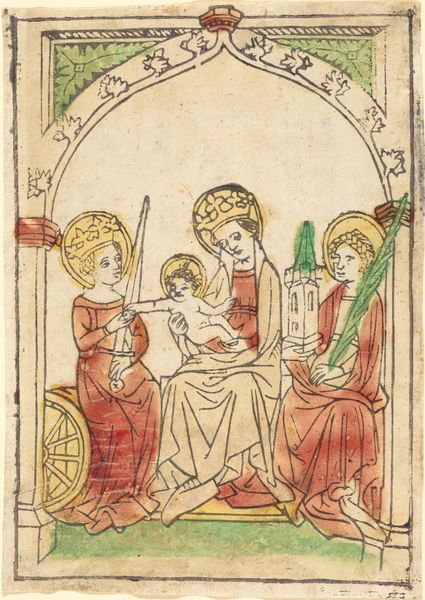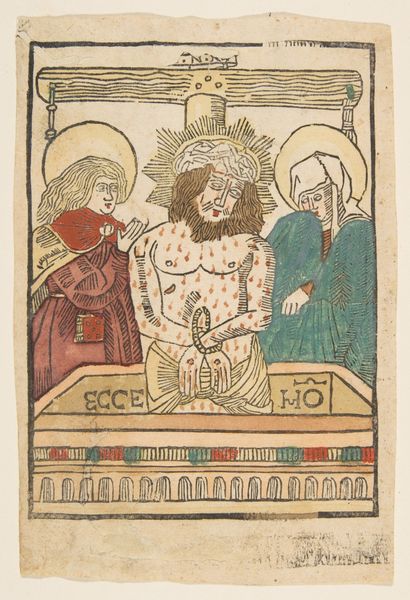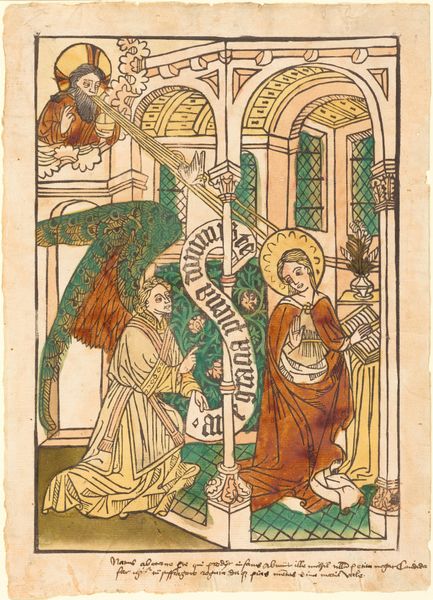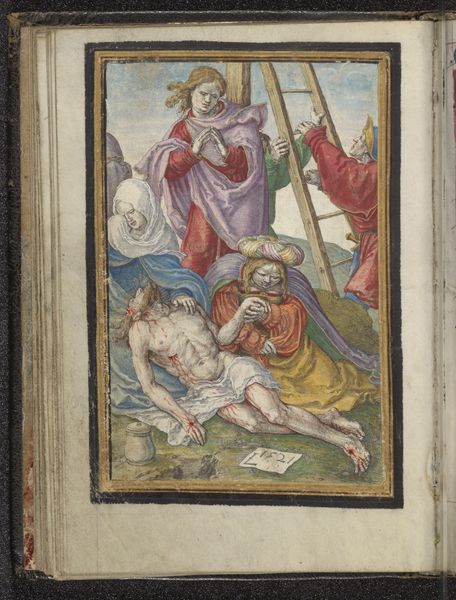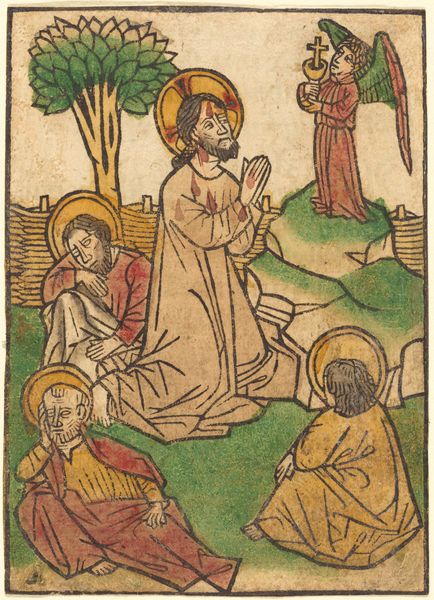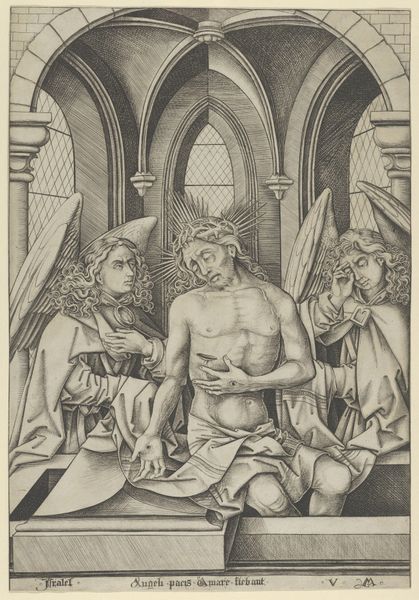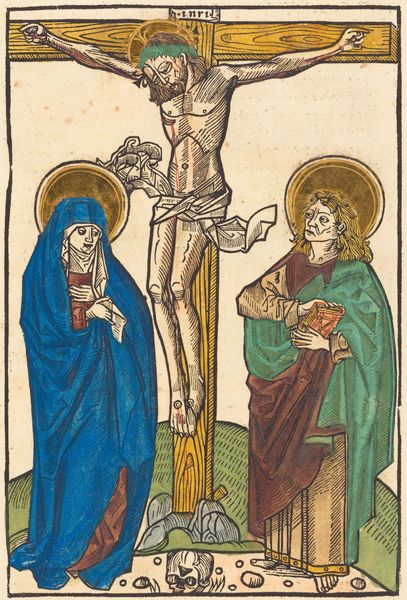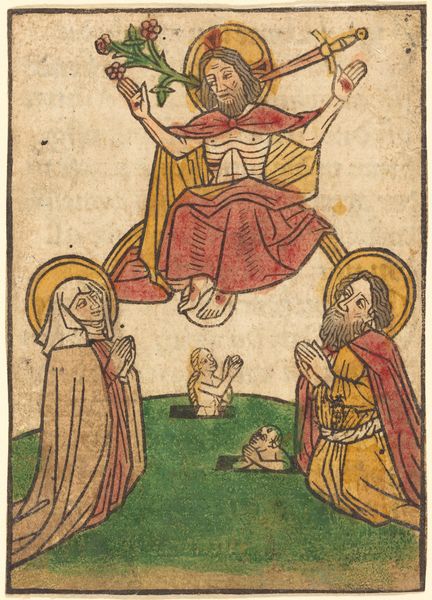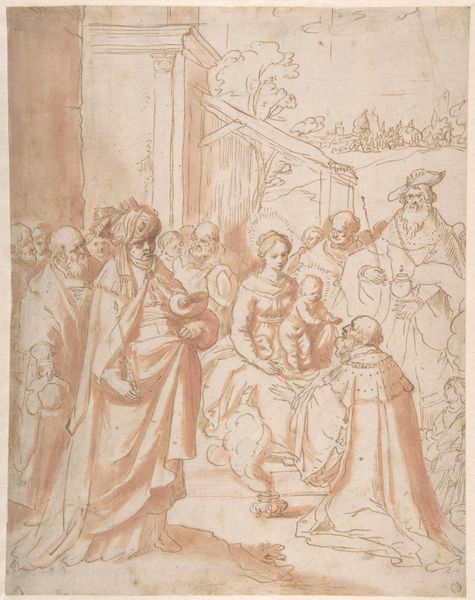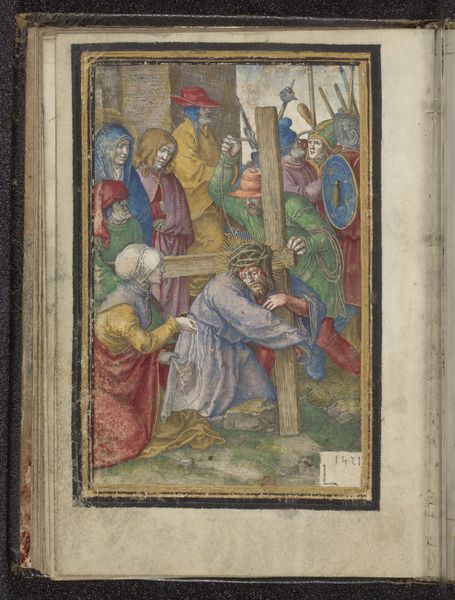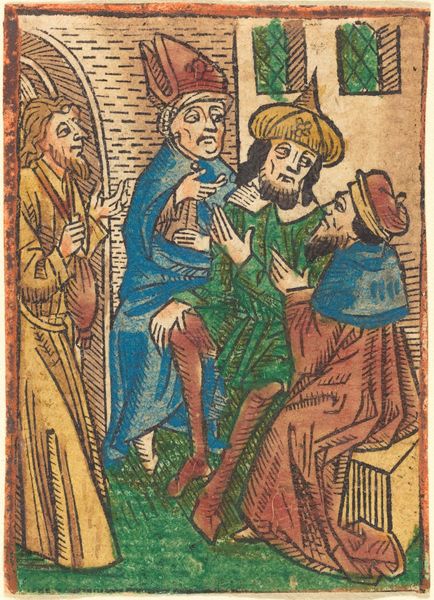
drawing, print, engraving
#
portrait
#
drawing
#
medieval
# print
#
figuration
#
coloured pencil
#
history-painting
#
engraving
#
watercolor
Copyright: National Gallery of Art: CC0 1.0
Editor: This is "Christ in the Tomb with Two Angels," an engraving by an anonymous artist, dating from around 1490 to 1500. The colours are striking for a work of this period, and there's such a raw, emotional vulnerability depicted. What strikes you most about it? Curator: I’m immediately drawn to the potent iconography. Think about the angel on the right, touching his face in a gesture that conveys both grief and recognition. What cultural memory does that action evoke for you? Editor: Hmm, perhaps an acknowledgement of mortality, and empathy for Christ's suffering? Curator: Precisely. Consider too how Christ is presented: the wounds are not glorified, but painfully visible. What's fascinating to me is how these raw, physical depictions coexist with symbols of divinity like the halo. The colors, while vibrant, also contribute to the emotional weight. Red, of course, represents sacrifice, but also perhaps love? Do you think it is a sentimental or more direct illustration of love? Editor: I suppose that the open wounds and direct eye contact signal love as pain and compassion instead of romance. Curator: Indeed, and consider the tomb itself – it’s not just a resting place but becomes a stage for a profound drama of loss and hope, echoing ancient funerary art while prefiguring Christ's later resurrection. This print becomes an important vehicle for the continuing spiritual drama of the time. Editor: It’s amazing to see how much symbolism is packed into a single image. It gives me a new appreciation for the cultural weight these images carried. Curator: It does the same for me. Thank you for sharing your reflections, I am happy we learned from each other.
Comments
No comments
Be the first to comment and join the conversation on the ultimate creative platform.
